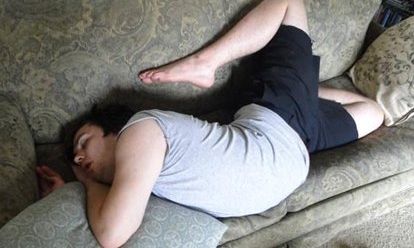How to improve back health with proper sleep
Our neck and back health is strongly influenced by how we sleep and what we sleep on. Ideally we should be spending approximately 8 hours a day in sleep. This provides the time for the body to recover from a day’s worth of activities. So one of the key elements of helping people treat back and neck pain is to identify how they sleep.
There are 3 primary sleeping positions, back, side and stomach. Each position has its pro’s and con’s from an overall health standpoint, this post focuses mainly on how it relates to the back and neck pain.
Back Sleeper
Back sleeping is the ideal position for better back health. This position helps decompress the spine from our daily standing and seated postures. It is important to make sure you address proper neck positioning, you do not want it too high or too low creating awkward neck positions.
Side Sleeper
Side sleeping is the most common sleeping position for most people. With proper pillow placement it can help provide a proper position for good spinal alignment. Placing a pillow between your knees and proper placement for you head will support the proper alignment. Just be aware side sleeping encourages more compression on you body’s organs and nerve supply. This can result in some numbness and discomfort. If you are a side sleeper it is recommended that you switch from side to side to balance out the pressure of side sleeping
Stomach Sleeper
From the perspective of proper neck and back health, this position should be avoided. Stomach sleepers are not able to keep proper head and neck alignment, resulted in the spine being put in a twisted position and also increases the pressure in the lower back.
How to train your body to get used to a new sleeping position
Saying you should side sleep or back sleep is easier said than done. Your body has gotten into a habit of sleeping a certain way and when you are asleep you and you will naturally move into that position when you are asleep. The key to training yourself into a new sleeping position is the use of pillows. It is not fool-proof but it can be effective. The training is performed similar to how your body has trained itself to sense the edge of the bed so you don’t fall off.
If you are a back sleeper and want to train yourself to sleep on your side, maybe due to snoring, place a pillow under one shoulder. As your body sleeps and tries to lay to its back, it will sense the pillow and roll back to the side position.
If you are a side sleeper and want to train yourself to sleep on your back, you can start in a back sleeping position with two pillow directly under you arms. This will provide the sensory input to avoid rolling to your side.
If you are a stomach sleeper, use the same technique as above to train yourself to back sleep. To transition to side sleeping use a body pillow or take a pillow and wedge it between you body and arms (hugging position).
You may have to do slight modification of these techniques to get it to work for you but you should be able to train yourself to get in a proper sleeping position.
How do you address what you sleep on?
What we sleep on is as important as how we sleep. A proper fitting mattress and pillow are very important to helping support proper body position when sleeping. There is no single rule of thumb on how to achieve this. The thing to keep in mind, is if you have a good consistent sleeping position and you suddenly experience neck and/or back pain then it is time to look at the mattress and pillow.
Is the mattress old and worn out? Mattresses over 10 years old begin to lose their ability to provide consistent support. If it is this old, consider replacing it.
Is the mattress too soft or too firm? Everyone is different when it comes to this. Find out what works best for you. Most mattress companies have a good return policy and will allow you the ability to return or trade in a mattress within 30 days of purchase. This time frame is adequate to identify if the mattress will work for you in the long run.
Replace your pillow regularly. Pillows break down too, so you should look at replacing your pillow if you start to experience neck pain. Again firm or soft, just make sure it encourages good neck and spine alignment.
